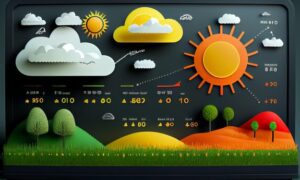Artificial intelligence is starting to influence every sphere of our lives, from the media we consume to the data analysis patterns that dictate the ads we see. Recently, however, in a bizarre twist of natural vs artificial, the development of AI is merging with the field of agricultural research and production to redefine the industry. Here’s why artificial intelligence in agriculture is so significant.
Artificial intelligence is redefining the agricultural sector by automating growing crops, controlling pests, monitoring conditions, and evaluating metadata for scientists and farmers.
The world of artificial intelligence can and will continue to impact agriculture, making the entire process more efficient and sustainable for the future of mankind. The rest of this article will look at the tremendous impact that AI is having on the agricultural sector and what it spells for the future.
What Is Artificial Intelligence?
Before diving into why artificial intelligence is so important in agriculture, it’s worth briefly defining what it accomplishes. Artificial intelligence is a broad term for machines that can learn new things, perceive data, synthesize information, map outputs, and so much more.
Why Traditional Methods Are Falling Off
Climate Variations
The challenge of traditional farming has to do with the unpredictability of Mother Nature. Different factors like rainfall, temperature, and humidity can all help or harm the growth of a crop, and different crops require different treatments in other conditions.
Pollution can obfuscate the forecast, too, making it much more difficult for farmers to correctly assess decisions regarding harvesting, planting, and tilling the ground.
Soil Quality
Another difficulty of traditional methods is determining soil quality. Crops require a diverse and healthy soil biome with nutrients like nitrogen, potassium, and phosphorous, but it can be quite challenging to determine whether these nutrients are in the soil at high enough levels. The ambiguity of soil quality can lead to poor crop quality.
How Is AI Used in Agriculture?
Even the most essential evaluation of plants will tell you a simple fact: different plants need different growing conditions. From monitoring the soil biome to offering predictive insights into the health of crops, AI is a valuable resource in identifying inefficiencies in crop growing and automating the process for maximum yield.
Weather Forecasting
Farmers may need help guessing how the climate will change in the future. Still, with the help of AI, farmers can make much more accurate predictions about the climate in the future, allowing them to make informed decisions about what crops to grow when to sow seeds, and when to harvest.
Crop Quality
AI is extremely useful in assessing soil quality and identifying plant deficiencies. For example, an AI application called Plantix was used to help farmers identify poor-quality soil and soil laden with pests and diseases.
Resources like Plantix are invaluable resources for farmers to improve their harvest quality. Soil quality evaluations are also helpful in the never-ending war on pests and plant diseases. More metadata on the soil quality, pests that afflict crops, and diseases that inhabit the soil help farmers and scientists develop better pesticides and fertilizers.
Robotic Harvesting
AI robots are widely used to determine crop quality, handle weeds, and harvest crops quickly. These robots are designed with multiple functions and are an extremely efficient and productive addition to the agricultural industry.
Vertical Farming
Vertical farming is also being revolutionized by the integration of AI and farming management software. This combination allows for real-time monitoring of environmental conditions, crop health, and resource usage in vertically stacked farming systems. With AI algorithms, farmers can make informed decisions and precise adjustments, leading to increased efficiency, sustainability, and higher crop yields in this innovative agricultural approach.
Final Thoughts
The face of agriculture is changing. Farmers are better equipped to identify harmful diseases, fend off weeds, and produce high-quality crops with accurate predictions as the sector shifts towards AI-powered technology, research, and production.

































